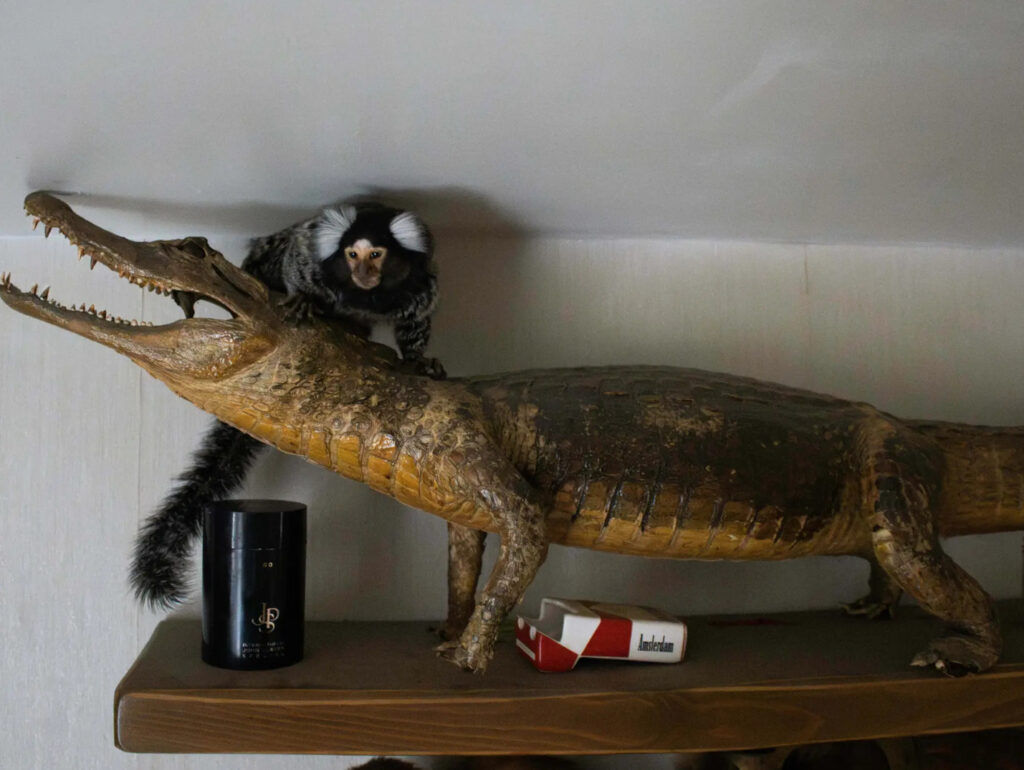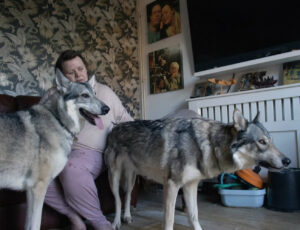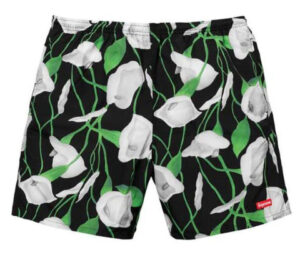“I have a few animals…” It’s an unassuming phrase, but in Britain’s quieter corners, it can open the door to an entirely different world — one of silent wolves pacing suburban gardens, of primates perched in converted bedrooms, of boa constrictors coiled under warm, humming heat lamps. In his latest photographic series, British photographer Jonty Clark peels back the curtain on this clandestine culture, capturing the raw humanity, ethical ambiguities, and tender intimacy at the heart of exotic pet ownership.
Months of delicate negotiation preceded each visit. A relentless series of Facebook messages, tentative conversations, assurances of discretion — all necessary rituals to gain entry into a deeply private network of rare animal owners, wary of public judgment and legal scrutiny. When Clark finally made his way to Hemel Hempstead to meet Tania and her wolves, he entered not just a home but an entire parallel existence hidden in plain sight.
What he uncovered was more complex, and more moving, than any simple morality tale could capture.
A Culture Shrouded in Secrecy
Britain’s exotic pet community thrives in obscurity, somewhere between legality and taboo. Unlike the bustling pet stores or dog parks that dot the nation’s urban landscapes, this is a world navigated through coded Facebook groups, word-of-mouth referrals, and private breeders who operate just outside the perimeter of public awareness.
Clark’s work doesn’t sensationalize this subculture; instead, it lingers in its quiet, often contradictory moments. His lens finds an unsettling tenderness: a young woman cradling a marmoset against her chest as if it were an infant; a retired couple lovingly preparing a fresh meat feast for their serval cat; a teenager lying prone on the floor while a monitor lizard drapes itself languidly across his back.
These are not the images of sinister hoarders or reckless thrill-seekers that dominate public imagination. Instead, they depict relationships that are at once deeply affectionate and deeply fraught — a profound attachment between human and animal, shadowed by the uncomfortable question of whether such bonds should exist at all.
Wolves in the Garden: Meeting Tania
Tania’s home in Hemel Hempstead looks, from the outside, like any other suburban British residence: tidy hedges, brick façade, a white door with polished brass numbers. But past the threshold, Clark encountered something extraordinary — two wolves, fully grown, pacing the perimeter of a specially reinforced back garden.
Their names were Storm and Luna, and they greeted visitors not with snarls but with an unsettling mix of caution and curiosity. In Clark’s portraits, the wolves’ liquid amber eyes meet the viewer’s gaze head-on, untamed yet somehow weary, as if aware of the strange compromises their lives entail.
Tania spoke of her animals not as possessions, nor even quite as pets, but as companions with whom she had forged a pact. “They chose me,” she told Clark, her voice tinged with both pride and reverence. Yet she also acknowledged the constant challenges: the demands of their care, the social isolation that came with owning creatures so fundamentally misunderstood, and the gnawing anxiety over potential legal ramifications.
Owning wolves — or high-percentage wolfdogs — in Britain requires navigating a labyrinthine tangle of regulations under the Dangerous Wild Animals Act 1976. Licenses must be secured, inspections passed, stringent conditions met. Even then, public fear and municipal scrutiny mean that many owners, like Tania, live with the constant threat of losing their animals at the stroke of a bureaucrat’s pen.
The Ethics of Affection: Where Love and Exploitation Collide
Clark’s project refuses easy answers. The photographs, though intimate and often beautiful, are haunted by ethical unease.
Is it right to keep a capuchin monkey in a terraced house, even if its owner hand-feeds it organic berries and provides sprawling playrooms designed to mimic a natural habitat? Can a boa constrictor be truly fulfilled coiled inside a custom glass enclosure, even one meticulously designed with environmental enrichment in mind?
The people Clark met were not oblivious to these questions. Many struggled openly with the cognitive dissonance of their choices. They spoke of their animals’ needs before their own, of the thousands of pounds spent on veterinary care, of the hours devoted to complex feeding regimens and environmental enrichment strategies.
But love, however sincere, does not always absolve. The exotic pet trade — licit and illicit — is a global industry fraught with cruelty, habitat devastation, and genetic degradation. Even animals born and bred in captivity remain tethered to a wildness that no cage, however gilded, can erase.
Clark’s photographs capture this tension without exploiting it. A man kisses the scaled head of his iguana with the same tenderness one might show a sleeping dog. A young woman clutches a parrot to her chest as if shielding it from the world’s encroachments. These are images of real love — but love shaped by human longing, not necessarily by animal need.
The Role of Isolation
A quieter, but no less potent, theme running through Clark’s series is isolation — both geographic and emotional.
Many exotic pet owners live on society’s margins, not just physically but psychologically. Their animals become focal points for their emotional lives, filling voids that human relationships have failed to satisfy. In some cases, the pets are anchors against depression, companions through loss, or the only reliable source of affection in an otherwise alienating world.
Clark met Mark, a middle-aged man living alone in a rural village, whose two lynxes occupied nearly every room of his sprawling but crumbling house. Mark spoke candidly about his estrangement from family and friends, about how the lynxes had given him a purpose when nothing else had. Clark’s portraits of Mark are among the most poignant: the big cats lounging across threadbare furniture while Mark gazes at them with a tenderness so raw it almost hurts to witness.
Isolation begets attachment, and attachment begets isolation — a feedback loop as intricate and dangerous as the relationships themselves.
A Changing Landscape
Britain’s relationship with exotic animals is in flux. Recent years have seen growing calls for stricter regulations, even outright bans on private ownership of certain species. Animal welfare organizations argue that no private individual, however well-intentioned, can meet the complex physical and psychological needs of a wild animal.
In response, some exotic pet owners have become increasingly defensive, forming tight-knit online communities where advice is shared, grievances aired, and the outside world kept at bay.
Clark’s project arrives at a pivotal moment, offering a rare and empathetic glimpse into a world that may soon be legislated out of existence — or driven even deeper underground.
His photographs serve not as polemic but as testimony: a record of a particular, peculiar way of living with animals, captured at the cusp of potential extinction.
Impression
Ultimately, Inside the Obscured, Closeted Habitats of Britain’s Exotic Pets is not about condemnation or celebration. It is about witnessing. About looking closely at the spaces where human desire, loneliness, and love meet the unknowable interiority of other creatures.
Clark does not pretend that a marmoset nestled in a cardigan is equivalent to a marmoset swinging through the canopy of a rainforest. Nor does he deny the powerful, sometimes life-saving solace these animals provide to their owners.
The power of his series lies in its refusal to simplify. It reminds us that human relationships with animals are messy, contradictory, and profoundly revealing. They tell us who we are, what we lack, what we yearn for — and, perhaps most importantly, where the limits of our empathy begin to fray.
In these hidden habitats, behind closed doors and down winding village lanes, Britain’s exotic pet owners are living out complex, deeply human dramas. Jonty Clark’s lens grants us rare entry into their world — and asks us to consider what we find there not with judgment, but with open, uneasy eyes.
No comments yet.








